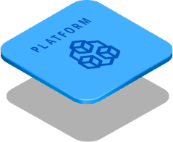Every day, critical documents enter organizations through email, web forms, and digital uploads. Without a defined process to move these files into a governed system, they remain in inboxes, personal drives, or outdated folders. The result is a fragmented retention process that weakens compliance, accessibility, and long-term planning.
To remain prepared for audits and operate efficiently, organizations need more than storage. They need a governed system that consistently captures, classifies, and retains records with transparency.
Where Retention Processes Fail
Even in regulated industries, retention often depends on manual steps. Staff must decide where to save files, how to name them, and when to archive them. In practice:
- Emails with attachments remain unfiled
- Files are left on desktops or local drives
- Versions are overwritten or duplicated
- Retention schedules are not applied consistently
This reliance on manual effort produces gaps in audit trails, retention violations, and wasted time searching for records.
Why the Problem Persists
Decentralized Capture
Documents arrive from multiple sources — emails, web portals, e-forms — and often remain in uncontrolled environments such as inboxes or shared drives.
Manual Filing
Users are expected to categorize and store documents correctly, but errors are frequent and enforcement is inconsistent.
Disconnected Policies
Retention rules may exist in manuals, but they are rarely tied directly to how documents are handled in practice.
Limited Oversight
Without dashboards and audit logs, organizations lack visibility into what is retained, for how long, and by whom.

How to Rebuild the Retention Process
A sustainable approach requires automation supported by clear oversight. Rules-driven workflows capture, classify, and store records in line with documented policies.
Automated Intake
Documents from email, portals, and e-forms can be routed into a governed records management platform, reducing reliance on individuals to move files manually.
System-Level Retention Schedules
Retention rules can be applied based on document type, department, or metadata, minimizing inconsistency.
Access and Change Tracking
All records are versioned and logged. System controls help limit unauthorized editing or deletion, supporting audit integrity.
Controlled, Centralized Access
Records are made available through role-based permissions, reducing reliance on email chains or unmanaged local copies.
The Result: Consistent, Compliant Records
With a complete retention process, organizations lower compliance risk, accelerate retrieval, and improve accountability. Archiving is consistent, records are searchable, and audit preparation becomes more predictable and less reactive.
VisualVault supports this structure by enforcing capture, retention, and access within a governed platform. It helps transform unstructured content into managed records that align with compliance and operational continuity requirements.


